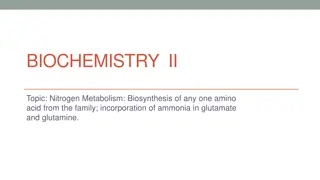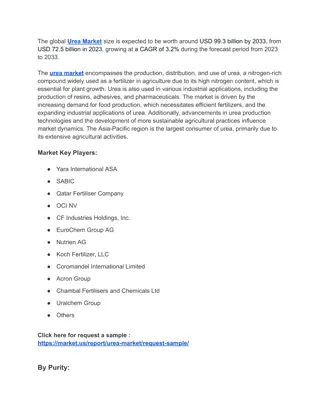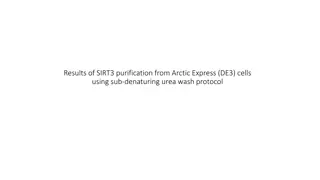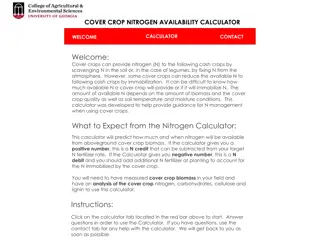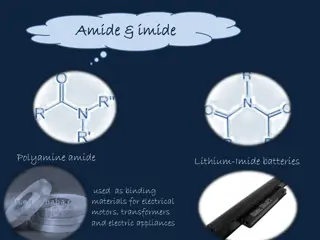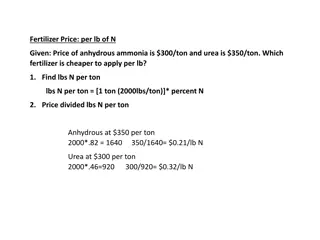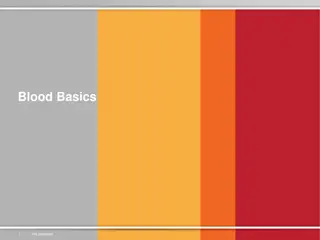
Clinical Significance & Interpretation of Blood Urea Nitrogen
Urea is the major excretory product of protein metabolism, vital for assessing renal function & nitrogen balance. Learn about its clinical significance, interpretation, measurement methods, and specimen requirements.
Download Presentation

Please find below an Image/Link to download the presentation.
The content on the website is provided AS IS for your information and personal use only. It may not be sold, licensed, or shared on other websites without obtaining consent from the author. If you encounter any issues during the download, it is possible that the publisher has removed the file from their server.
You are allowed to download the files provided on this website for personal or commercial use, subject to the condition that they are used lawfully. All files are the property of their respective owners.
The content on the website is provided AS IS for your information and personal use only. It may not be sold, licensed, or shared on other websites without obtaining consent from the author.
E N D
Presentation Transcript
Clinical significance and interpretation of Blood Urea Nitrogen VLD-411
Urea or Blood Urea Nitrogen
Urea is the major excretory product of protein metabolism formed in the liver from amino groups ( NH2) and free ammonia generated during protein catabolism Enzymatically catalyzed process is termed the urea cycle
Clinical Application to evaluate renal function to assess hydration status to determine nitrogen balance to aid in the diagnosis of renal disease to verify adequacy of dialysis
Measurements of urea were originally performed on a protein- free filtrate of whole blood and based on measuring the amount of nitrogen urea is often reported in terms of nitrogen concentration rather than urea concentration (BUN) Urea N concentration can be converted to urea concentration by multiplying by 2.14
Enzymatic method urease catalyzes hydrolysis of urea in the sample, and the ammonium ion produced in the reaction is quantified It couples with glutamate dehydrogenase (GLDH) and the rate of disappearance of NADH at 340 nm is measured Clinical chemistry (Bishop)
Specimen Requirements in plasma, serum, or urine If plasma is collected, ammonium ions and high concentrations of sodium citrate and sodium fluoride must be avoided citrate and fluoride inhibit urease fasting sample is not required usually Urea is susceptible to bacterial decomposition, so specimens (particularly urine) that cannot be analyzed within a few hours should be refrigerated
Pathophysiology An elevated concentration of urea in the blood is called AZOTEMIA Very high plasma urea concentration accompanied by renal failure is called UREMIA or the UREMIC SYNDROME condition is eventually fatal if not treated by dialysis or transplantation Three main categories: prerenal, renal, and postrenal
Prerenal azotemia 1. Result of reduced renal blood perfusion Less blood is delivered to the kidney; consequently, less urea is filtered Might be due to: congestive heart failure, shock, hemorrhage, dehydration, and other factors resulting in a significant decrease in blood volume 2. Amount of protein metabolism A high-protein diet increased protein catabolism, such as occurs in stress, fever, major illness, corticosteroid therapy, and GI hemorrhage, may increase the urea
Renal Azotemia Decreased renal function causes an increase in plasma urea concentration acute and chronic renal failure glomerular nephritis tubular necrosis Other intrinsic renal disease
Postrenal azotemia due to obstruction of urine flow anywhere in the urinary tract by renal calculi Tumors of the bladder or prostate severe infection
Decreased plasma urea Low protein intake Severe liver disease Severe vomiting and diarrhoea during late pregnancy and in infancy as a result of increased protein synthesis





